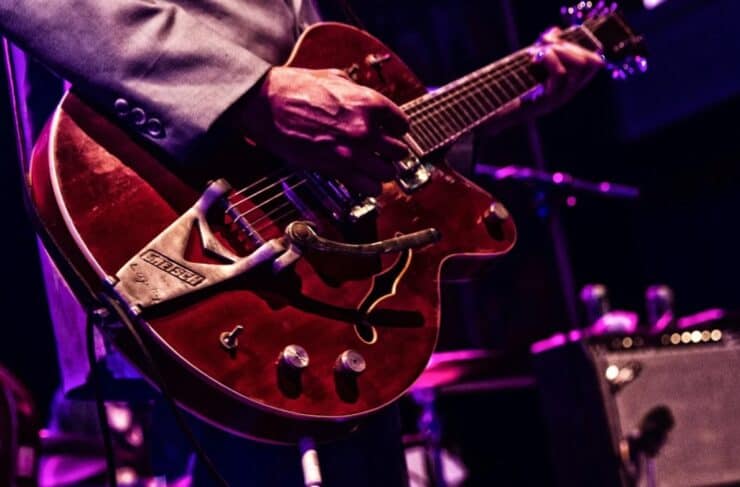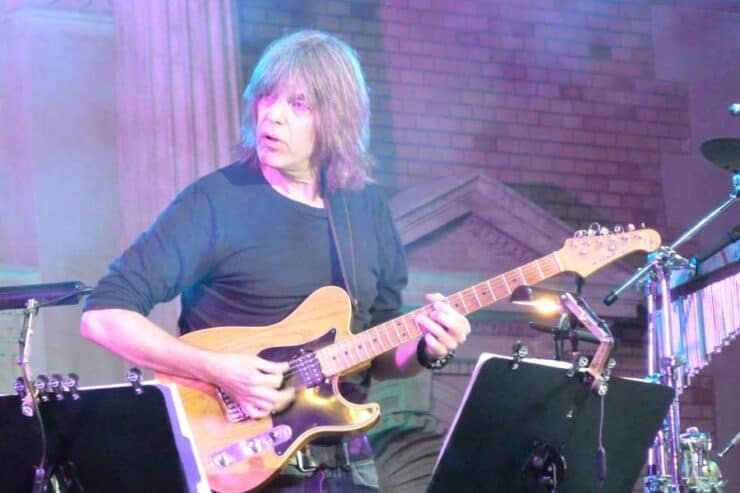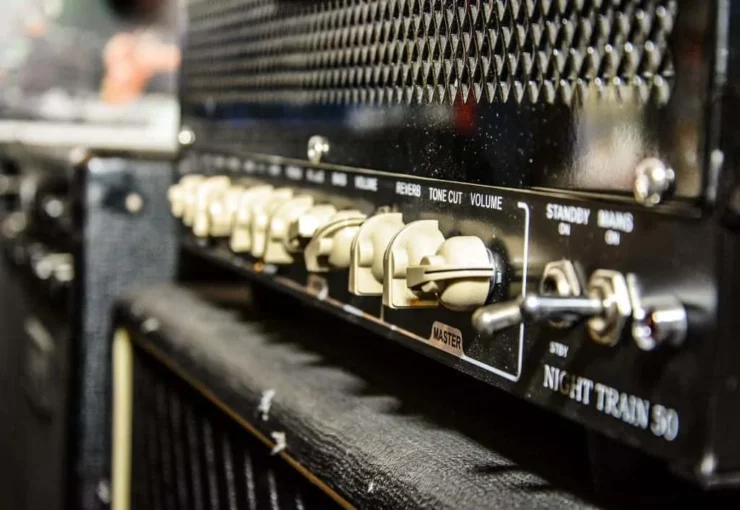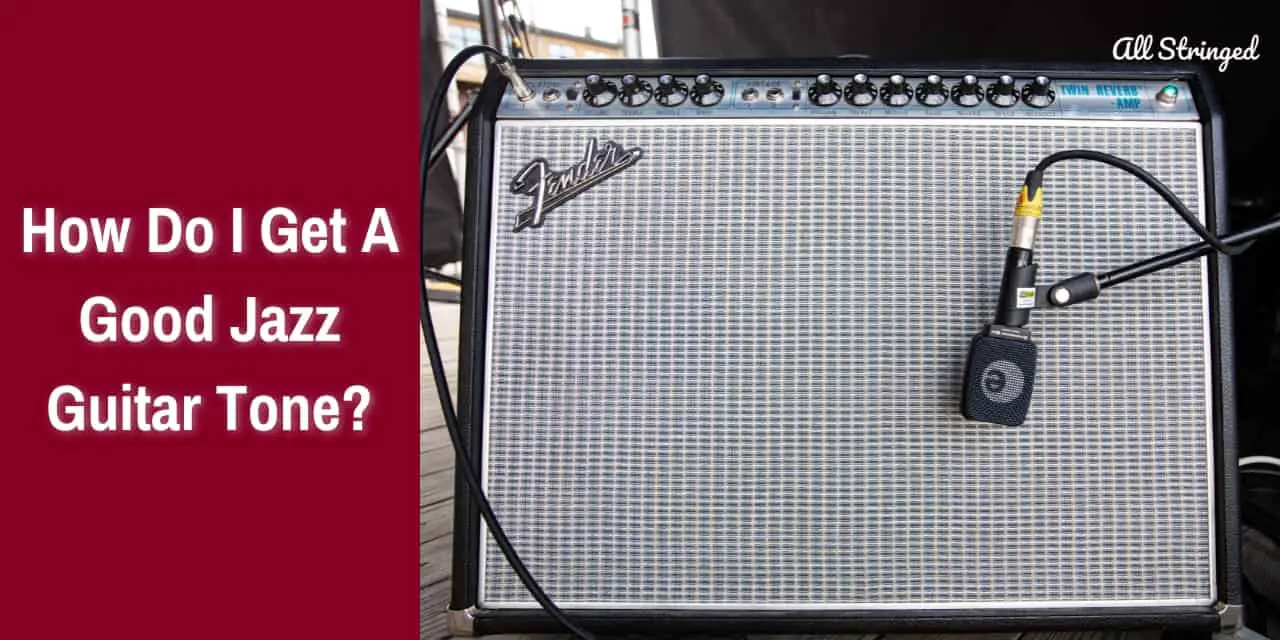Are you a guitar player looking to perfect your jazz guitar tone? Are you tired of spending hours trying to figure out what works and what doesn’t? Look no further! In this article, we’ll discuss the essential components of getting a good jazz guitar tone and how to use them to your advantage. Read on to find out how you can take your jazz guitar playing to the next level!
What is a jazz guitar tone?
Jazz is a genre popular for its soulful expressions, improvisational freedom, and intricate melodies as it encompasses a rich array of musical elements. At the heart of jazz music is the guitar, a highly versatile instrument that offers a canvas for musicians to paint their sonic stories. Jazz guitarists are known for their distinctive tone, a sonic signature that sets them apart in the world of music.
>>> Click here to read our review about the Top 15 Best Jazz Amps <<<
Definition of jazz guitar tone
The jazz guitar tone is the identity that distinguishes the genre’s guitarists from those of other musical styles. It is a harmonious fusion of elements that, when combined, create a signature sound that resonates with the heart of jazz. At its core, the jazz guitar tone embodies different characteristics like warm and mellow character, clean and clear sound, rich harmonics and overtone, and more.

Characteristics of jazz guitar tone
Here are some of the primary characteristics of jazz guitar tone –
#1. Warm and mellow character
The jazz guitar tone is often characterized by its warm and mellow quality. Unlike the sharpness of rock or the twang of country music, jazz guitarists embrace a roundness and gentleness that evoke a sense of intimacy and emotional depth. This warm character allows listeners to feel as if they are enveloped in a musical embrace.
#2. Clean and pristine sound
Clarity is often seen as the hallmark of jazz guitar tone. Many jazz musicians and guitarists prefer a clean and unadulterated sound that allows each note to ring out with precision. This clean tonal foundation provides a canvas for intricate chord voicings, complex harmonies, and the delicate interplay of notes.
#3. Rich harmonics and overtones
The richness of jazz guitar tone is rooted in its abundant harmonics and overtones. Guitarists achieve this using techniques like fingerpicking, where the fingers engage with the strings in a manner that promotes the development of these complex sonic layers. This results in a textured and multidimensional sound.
#4. Sustained notes and chords
Sustain is a critical element in jazz guitar tone. Guitarists cox long-lasting notes and chords that resonate and interact harmonically, adding depth and complexity to their playing. This sustained quality enhances the emotive and expressive nature of jazz guitar phrasing.
#5. Dynamic control
Jazz musicians and guitarists are renowned for their exceptional control over dynamics. They can seamlessly shift from hushed whispers to explosive crescendos, allowing their playing to convey a wide spectrum of emotions within a single piece. This dynamic range adds a dynamic and compelling dimension to their music.
#6. Expressive techniques
The world of jazz guitar tone is full of expressive techniques that bring life to the music. Vibrato imparts a human-like quality to sustained notes, while slides introduce fluidity and emotion to melodic phrases. These techniques are masterfully integrated to infuse emotion and personality into every note.
#7. Artful use of effects
While jazz guitar tone is often associated with a “clean” sound, some players tastefully incorporate effects to enhance their sonic palette. Reverb, chorus, and delay are used sparingly for creating spatial depth without overpowering the fundamental character of the tone.
How do I get a good jazz guitar tone?
The realm of jazz guitar is a captivating world of sophistication and expressiveness, where musicians and guitarists paint sonic portraits with each note. The key to achieving the quintessential jazz guitar sound is the pursuit of the perfect tone, which is a harmonious blend of instruments, jazz amplifier setting, and effects pedals. However, achieving that tone is not always easy, especially if you’re a beginner. This is why many beginners have the same question – how do I get a good jazz guitar tone? The answer is easier than you may think. Here are the steps you should follow to get the coveted jazz guitar tone that resonates with the genre’s soulful essence.

Step 1: Choose the right guitar
Selecting the appropriate guitar is the first step toward achieving the ideal jazz guitar tone. While personal preferences may vary, there are certain key factors to consider such as hollowbody or semi-hollow body guitars, pickups, scale length, and more.
Jazz guitarists often prefer hollowbody or semi-hollowbody guitars for their warm and resonant tones. These guitars produce rich harmonics and offer exceptional sustain, contributing to the genre’s characteristic sound.
Guitars with longer scale lengths tend to produce a clearer and more defined tone, which makes them ideal for jazz. Instruments with a scale length of around 24.75 inches to 25.5 inches are commonly favored by jazz guitarists.
Jazz guitarists often gravitate toward humbucker pickups due to their ability to deliver a smooth, full-bodied tone with reduced noise. Neck pickups are especially popular for their warmth and versatility in jazz settings.
Step 2: Adjust amp settings
The amplifier is the heart of your sound and plays a key role in shaping your jazz guitar tone. You must have a clean channel, a balanced EQ, and low to medium gain for an ideal jazz guitar tone.
Set up your guitar amp to the clean channel, as the jazz guitar tone thrives on a clear and uncluttered sound. This will provide a pristine canvas for your playing while ensuring that the tonal nuances shine through.
Dial in a balanced EQ with slightly boosted lows and mids while also taming the highs. This configuration will emphasize the warmth and presence of the guitar while minimizing harsh frequencies.
Keep the gain settings low to achieve a clean and focused sound. This will allow the natural dynamics of your playing to come through, which is important for expressive jazz guitar phrasing.
Step 3: Use effects pedals
Effects pedal can be used judiciously to add depth and dimension to your jazz guitar tone. You can use effects like reverb, delay, and chorus effectively to get a better tone.
Reverb adds a sense of space and ambiance to your sound. Go for a subtle, spring-like reverb to emulate the warm acoustics of a jazz club.
A touch of delay will enhance your playing by adding a subtle echo effect. Set the delay relatively short and the feedback low for a tasteful enhancement without overwhelming the notes.
Chorus pedals can create a lush, shimmering texture to your tone. Use a gentle chorus setting to add a sense of depth and movement to your sound.
Step 4: Technique and expression
Ultimately, your fingers will be your primary tone generator. You must focus on having the right technique to enhance your jazz guitar tone. Develop your fingerstyle technique to achieve clean, articulate notes. Fingerstyle playing will allow for precise control over tone and dynamics.
Experiment with thumb placement on the strings to control the attack and brightness of the notes. Placing the thumb closer to the neck will yield a mellower tone while positioning it closer to the bridge will result in a brighter sound.
Master dynamics by varying your picking strength and finger pressure. This will add expressiveness to your playing and allow you to convey emotion through your tone.
Different types of jazz guitar tones
Jazz guitar, with its rich tapestry of moods and styles, offers a wide spectrum of tones that range from the pristine to the gritty. This genre’s diverse landscape encourages guitarists to explore different sonic avenues to find the one that suits their musical needs and expressions. Here are the different types of jazz guitar tones you can aim to go for. Each of them carries its unique characteristics, contributing to the eclectic and expressive world of jazz guitars.
Clean jazz tones
The clean jazz tone is the hallmark of the genre, characterized by its clarity, warmth, and unadulterated sound. This type of tone is achieved by minimal distortion or overdrive. The clean tone provides a pristine canvas for intricate melodies, chord voicings, and improvisational passages.
A clean jazz tone allows each note to ring out with precision, offering a level of articulation that is vital for jazz’s intricate phrasing. Jazz greats like Jim Hall and Joe Pass are renowned for their mastery of the clean tone, using it to craft emotive and melodically rich compositions.
Dirty jazz tones
Dirty jazz tones inject a touch of grit and attitude into the genre’s sonic palette. While maintaining the essence of jazz, this tone introduces a mild to moderate amount of overdrive and distortion. This results in a more aggressive and expressive sound that adds a contemporary edge to traditional jazz forms.
Guitarists like Kurt Rosenwinkel and John Scofield embrace the dirty jazz tone to infuse their music with a raw, bluesy quality. The juxtaposition of the genre’s sophistication and the hint of dirt creates a captivating blend that appeals to modern sensibilities.
Reverb jazz tones
Reverb jazz tones immerse the listener in a rich sonic atmosphere, evoking the ambiance of intimate jazz clubs or vast concert halls. By adding reverb, a spatial effect that simulates the natural reflections of sound in different environments, musicians and guitarists create a sense of depth and expansiveness in their playing.
Reverb jazz tones infuse a touch of nostalgia and romanticism into the music, making listeners feel as if they are an active part of the performance space. Guitarists like Pat Metheny skilfully utilize reverb in their music to create dreamy, ethereal soundscapes that elevate jazz to new heights.
Mellow jazz tone
The mellow jazz guitar tone is one of the most popular styles of tones in this genre. Characterized by its depth and roundness, this type of jazz guitar tone is achieved through hollowbody or semi-hollowbody guitars with humbucker pickups. Jazz legends like Wes Montgomery embraced this jazz guitar tone, using it to create emotive, soulful melodies. The mellow jazz tone is perfect for ballads, introspective solos, and settings that demand a touch of nostalgia.

Bright and articulate jazz tone
A bright and articulate jazz guitar tone is characterized by its presence, clarity, and emphasis on high frequencies. Guitarists looking for this type of tone often use solid-body guitars with single-coil pickups. John Scofied’s edgy and incisive tone is a great example of the bright and articulate approach in jazz music. This tone is perfect for fast-paced, intricate lines and situations where the guitar has to cut through a dense ensemble.
Smokey and subdued
The smokey and subdued jazz guitar tone exudes a late-night, intimate ambiance. Achieved through a combination of reduced treble, light overdrive, and precise technique, this tone evokes the atmosphere of a dimly lit jazz club. Grant Green and Barley Kessel often embraced this tone, captivating audiences with their soulful and introspective playing.
Fusion and effects-driven jazz guitar tone
In modern jazz, fusion guitarists explore a diverse palette of tones by incorporating different effects pedals. This approach allows for experimental textures, from swirling delays to ethereal reverbs. Artists like John McLaughlin and Pat Metheny seamlessly integrate effects to create captivating sound landscapes. Fusion tones are dynamic and eclectic, which makes them suitable for adventurous and genre-blurring compositions.
Important tips to get the best jazz guitar tone possible
The world of jazz guitar is a realm of sophistication and expressiveness, where each and every nuance matters to create the perfect jazz tone. From the warm embrace of classic jazz to the contemporary edge of fusion, crafting an exceptional jazz guitar tone will involve a delicate interplay of different techniques and gear choices. Here are some of the tips that will come in handy and help you get the best jazz guitar tone, each contributing to the creation of captivating jazz guitar tones.
#1. Start with the right guitar and strings
The foundation of your jazz guitar tone will begin with the instrument you’re choosing. You must opt for hollowbody or semi-hollowbody guitars for their rich, resonant qualities. Humbucker pickups are favored for their smooth, noise-free output that complements jazz’s melodic intricacies.
Strings also play a key role in shaping your jazz guitar tone. There are different things to consider when selecting such as the type of strings, gauge selection, and string material. Jazz musicians and guitarists often opt for flatwound strings because of their smooth surface and mellow tonal characteristics. These strings reduce finger noise and offer a warm, vintage-inspired sound that suits the genre’s elegance.
Medium to heavy gauge strings contribute to a full-bodied tone. They enhance sustain and resonance, allowing your notes to sing with depth and clarity. Nickel or stainless steel strings are popular choices for jazz tones. Nickel strings offer a balanced tone with a touch of warmth whereas stainless steel strings offer brighter highs and more projection.
#2. Explore different picking techniques
Experiment with different picking techniques, including hybrid picking (using both fingers and a pick) and alternate picking. Each technique will yield different tonal qualities, allowing you to tailor your sound to your music’s mood.
The fingerstyle technique will offer precise control over each note’s attack and decay. Mastering fingerstyle playing will enhance your ability to articulate complex melodies and chord voicings, contributing to a distinct jazz tone.
Adjusting your thumb placement on the strings can greatly alter your tone. Placing the thumb closer to the neck will create a mellower sound while moving it toward the bridge will produce a brighter, crisper tone.
Vibrato adds a human touch to sustained notes. You should practice controlled vibrato by varying the speed and width of your finger movements. This technique will infuse your playing with expressiveness and emotion.
#3. Embrace clean amplification and dynamic control
Start with a clean amplifier setting to allow the nuances of your playing to shine through. Jazz guitar tones thrive on clarity and a clean amp will offer a pristine canvas for your musical expression.
Dynamics are a cornerstone of jazz guitar tones. Practice controlling your picking strength and finger pressure for achieving a wider range of tonal variations. This dynamic control will add depth and emotions to your playing.
#4. Sculpt tone with EQ
Equalization is a powerful tool for shaping your jazz guitar tone to perfection. To make the most of it, you need to boost lows and mids, tame high frequencies, and sculpt notch filters.
Jazz tones tend to thrive on warmth and presence. You should slightly boost the lows and mids on your guitar amp’s EQ settings to achieve the characteristic depth and articulation of jazz chords and solos.
While some high-end sparkle is desirable, excessive treble can result in a harsh sound. You should gently roll off the highs to maintain a balanced, smooth, and inviting tone. Moreover, you should also try to experiment with notch filters to eliminate any resonant frequencies that might interfere with your tone. These filters can help you fine-tune your sound and eliminate any unwanted artifacts.
#5. Experiment with different pickups
The choice of pickups also significantly influences your jazz guitar tone. Experimenting with different pickups can help you find the perfect match that suits your style. When considering pickups, you must think of neck pickups, bridge pickups, or using both.
The neck pickup is often favored for its warmth and richness. It results in smooth, round tones that are well-suited for melodic soloing and chord comping.
The bridge pickup is capable of delivering brighter tones with more articulation. It is ideal for cutting through a mix during solos and adding clarity to fast-paced passages.
Using both pickups simultaneously will give you a balanced and versatile tone. This blend combines the warmth of the neck pickup with the brightness of the bridge pickup for a harmonious sound.
#6. Learn from the masters
You should also listen to and analyze the playing of jazz guitar legends. Study their techniques, articulations, and tone to gain insight into the nuances that have made their jazz guitar tones so iconic.
However, you must remember to be original and creative. Your tone is an extension of your artistic expression, you cannot become good at it if you just copy the masters. Moreover, you should continue to refine and evolve as you grow as a musician.
FAQs
What factors should I consider when trying to get a good jazz guitar tone?
There are several factors to consider when trying to get a good jazz guitar tone. First, consider the type of guitar and pickups you are using. For jazz, a hollow-body guitar with single-coil pickups is a popular choice. Second, consider the type of amp and effects you are using. Jazz guitar tones can be achieved with both tube amps and solid-state amps, though some effects such as reverb, delay, and chorus can help to create the classic jazz sound. Finally, consider the strings you are using. For jazz, lighter gauge strings are often recommended for a warmer and mellower sound.
What type of amp should I use for a good jazz guitar tone?
Both tube amps and solid-state amps can be used to get a good jazz guitar tone. Tube amps are known for their warm, rich sound and are often the preferred choice for jazz. However, solid-state amps are also an option and can provide a more modern sound. Consider your personal preferences and try out different amps to find the one that is best for you.
What type of effects should I use for a good jazz guitar tone?
Reverb, delay, and chorus are some of the effects you can use to get a good jazz guitar tone.



